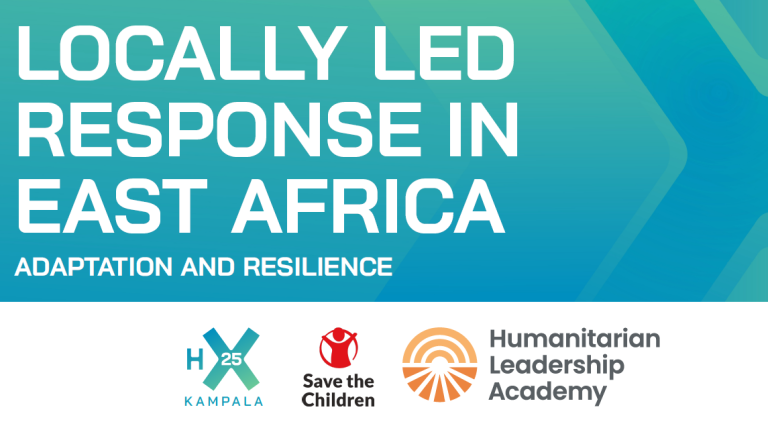A few first steps from the Humanitarian Leadership Academy
What is diversity, accessibility and inclusion?
Equality, diversity, equity, accessibility, usability and inclusion are some of the many possible terms used by academics, practitioners and advocates to indicate the quality of approaches, methodologies, products, services or content in general designed to be easily used by the broadest possible set of users.
For the sake of practicality, we will be using the terms diversity, accessibility and inclusion (DAI) as a holistic set of principles. This is not intended to blur the subtle differences between these terms, but rather to suggest a more comprehensive learning design approach that aims to effectively support learners in all their variety.
Indeed, good learning design is founded on putting the learner at the heart of the content, identifying their learning needs, their learning styles and their learning contexts. DAI is simply an extension of that effort to ensure that as many possible learners can benefit from the content being delivered.
Why invest in DAI?
DAI has become an imperative in all aspects of digital delivery, but it shouldn’t end up as a box-ticking activity. There are very good reasons to focus on DAI in all aspects of learning design:
1. DAI learning design ensures good learning design: by putting the time and effort to think about the needs of different learners and developing a deliberate user-centred approach, learning content is better planned, designed, implemented and delivered in all its aspects.
2. DAI allows your learning to reach more users: by making small changes to content and delivery methodologies, learning can become accessible and inclusive to a much broader public, not only including individuals with specific access needs, but also users with different learning styles.
3. DAI future proofs learning: by developing content on clear and coherent foundations, it can be refreshed, expanded and iterated upon more easily, preventing the need to completely rebuild content from scratch.
What are some DAI considerations?
DAI is a continuously developing field of thought and practice and it would be impossible to provide an exhaustive list of Dos and Don’ts. However, applying a user-centered design approach to a few categories of access needs can be a good way to start:
1. Individual Access Needs: Disability is often the category most intuitively associated with accessibility. However, given the difference between medical, legal and social definitions, it is better to consider of a broad variety of Individual Access Needs. Considering physical (hearing impairment; visual impairment including colour-blindness; motor skill disabilities; etc.), cognitive (dyslexia, dysgraphia, dyspraxia, dyscalculia, etc.) or psychological (attention, anxiety, trauma, etc.) factors without the need to medicalise or pathologise those factors, expands the learning to a broad variety of users.
2. Technology: The development of any digital content requires attention to the technical infrastructure it is intended to operate within and the digital literacy of the intended user. This is all the more important when working in the humanitarian sector as users are often in locations with poor internet connectivity, using out of date hardware and software and might not have had the opportunity for formal induction or training on using systems and platforms.
3. Language: Localisation and contextualisation of digital content is often a requirement for digital content, but one that is seen as a subsequent step to the development of the “main” content. Tackling language considerations in the planning phase can improve the overall design of the learning content and avoid translation issues down the line. Even if the content is intended to be developed in a single language, it can benefit from being simplified and streamlined so that non-native speakers and learners without prior technical knowledge of the subject can benefit from it. Considering different languages allows the anticipation of issues that might develop when translating text and even when placing text in a visual medium, such as text size, orientation (right-to-left, left-to-right, vertical columns, etc.).
4. Culture: As with language, the different cultures of potential users can be a key factor in learning design. The way the user is addressed (formal/informal, gendered/neutral, active/gerund, etc.), the situations that the user or characters are represented, the cultural signifiers of certain visual or audio representations, etc. When designing learning for a specific context (such as a refugee crisis on the border between two countries), it is important to tailor the content to it in such a way that users have a connection with it. Similarly, when designing learning that can be applied to a variety of contexts, it’s useful to represent some of those different contexts to showcase the similarities and contrasts. In this sense, when learning content represents characters and situations, diversity in representation can be a way to ensure engagement from the learner.
How to design for DAI?
In order to ensure that learning content is compatible with different access needs, it should be built methodically from the beginning2, incorporating DAI considerations at every step. A few simple guidelines can help:
1. Produce a clear, coherent and robust baseline, ensuring that the learning content is, in its basic structure, compatible with the different access needs. For example, content that uses simple language, systematically provides definitions for all technical terms, presents uncluttered visuals and is divided into small, manageable modules is a lot easier to navigate for most users and especially those with language difficulties, short-attention spans or unreliable access to the internet. Furthermore, such a baseline is easier to translate, adapt and expand.
2. Provide options for different learners, ensuring that users with disabilities and different learning styles can use their preferred delivery methodologies. For example, providing the option to read a transcript or listen to it read out via an immersive screen reader allows learners with visual or hearing impairments to benefit from it equally, as well as those learners who absorb information better visually or aurally to choose their preferred medium.
3. Showcase accessibility clearly, ensuring that users can take full advantage of the different options available to them. For example, having visually distinct icons for different delivery methodologies (text, audio, video, etc.) allows learners to recognise the choices they have, providing links to translations allows them to use the language they prefer.
Diversity, accessibility and inclusion are evolving areas of thought and practice and everyone has room to develop further. Starting with these guidelines can be a first step on a road to better learning design.
Where to find more in-depth resources?
1. The British Civil Service provides resources on designing for accessibility including helpful Dos and Don’ts relating to specific disabilities that can be a great first step.
2. The Web Content Accessibility Guidelines (WCAG) provide an extensive set of principles, tools and resources for digital design for a deeper dive.
The Humanitarian Leadership Academy is committed to bringing more to our partners on diversity, accessibility and inclusion as well as learning design in general.


